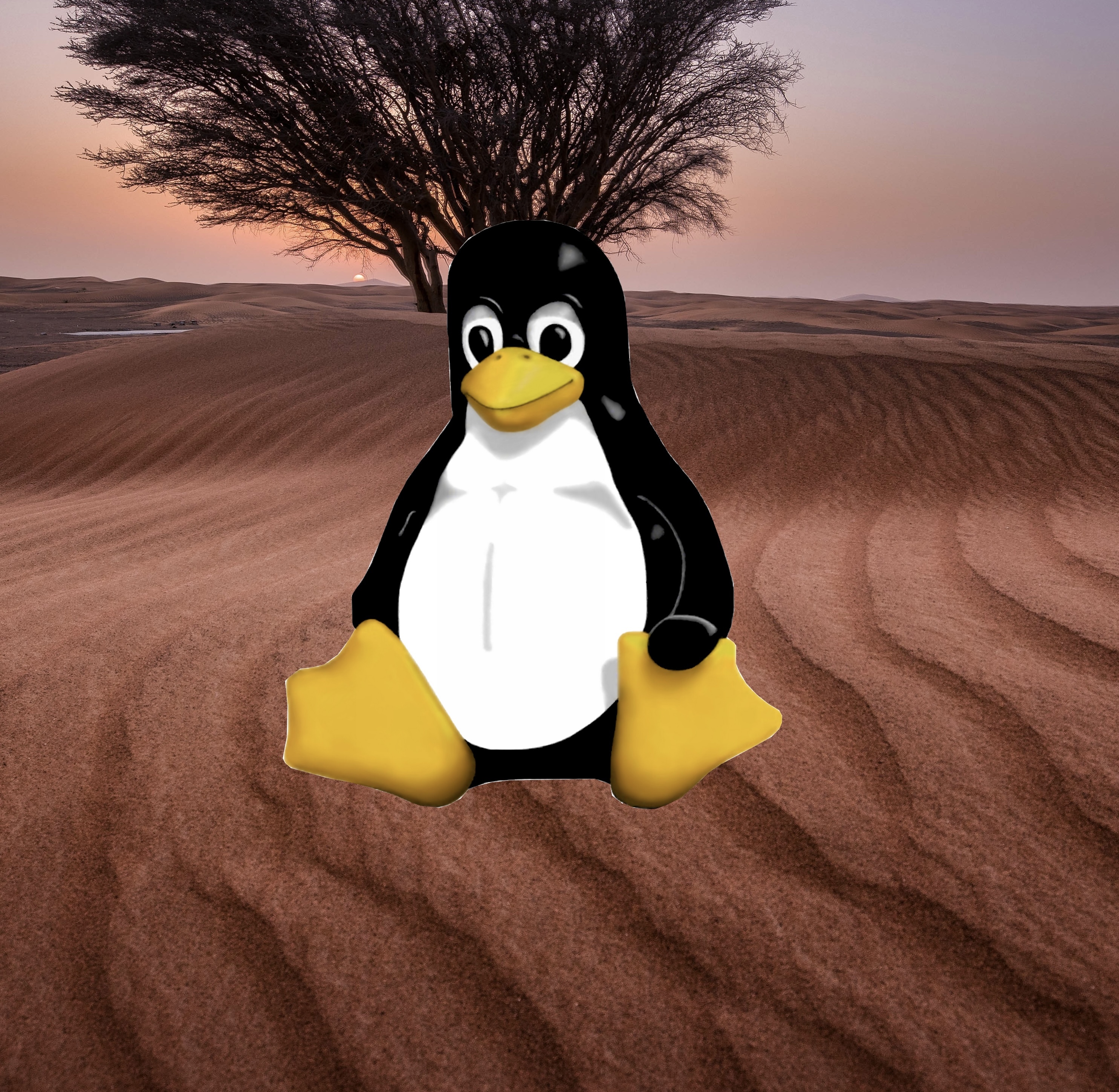How do you guys get software that is not in your distribution’s repositories?
There is no software that is not in AUR. I use arch, BTW.
But yeah, sometimes I just compile from source, if needed.
That’s exactly what the vast majority of AUR packages do already? You can also apply modifications to the compilation process if needed.
Indeed, but don’t underestimate my laziness.
My software, QuickDAV, is not in the AUR. It’s open source, and I release it only as an AppImage, because I am lazy.
I guess we should have added the word “notable”
I’m terribly sorry, you left the door wide open ;)
I’m curious, what makes AppImage a good choice for the lazy developer? Is it easier to create?
Ouch. xD
It’s super easy to create. And you distribute it on your own, so it’s basically like an installer exe on Windows. In my mind it’s one step above only offering source code.
There’s so much random, useful software distributed only as appimages. But not notable enough for packaging fanboys.
Gatekeeping the word “software” here?
Here’s something not in the AUR. Tested on archClearly we need an Arch version of rule 34 and rule 35
Rule 34a: If linux software exists, it’s in the AUR. No exceptions.
Rule 35a: If linux software is not in the AUR, it will be made available in the AUR.
I don’t intend on pushing that one to the AUR. It’s not worth it.
Maybe I’ll make an AppImage at most.I don’t know any formal requirements for it being on AUR, but I just feel like this one does not fit there.
Sorry, I’ve already posted the new internet rules and they took immediate effect, I’ll have to report this incident to…the council.
Someone will put the AppImage in AUR
This is such a weird gatekeeper take
Its a joke lol, why are you so serious all the time
i use arch based btw (I love my Manjaro and it’s AUR support) :>
If you don’t compile from source, do you even Linux?
Linux From Scratch user detected
Or Slackware
Or gentoo.
Ah … yeah … totally. I would never use some filthy peasant distro like Mint. No sir! Never never ever!
AUR changed my life
Did someone’s script wipe out your tax returns?
Native package manager > Native binaries > AppImage > Flatpak.
Yes, snap isn’t even on the scale.
Not a fan of AppImages myself. For an universal format it has surprising amount of issues with different distros, in my experience. And the whole Windows style “go to a website, download the AppImage, if you want to update it, go to the web page again and download it again” is one thing I wanted to get away from. At least they don’t come with install wizards, that clicking through menus thing was a pain.
For one off stuff I run once and never need again, AppImage is alright. But not being built-in with sandboxing, repos, all that stuff, it just seems like a step back.
I ran into the same issues, mentally, when trying out AppImages for the first time - but my attitude changed once I found and started using this tool: https://github.com/ivan-hc/AM
So it’s Scoop, but for Linux? (That’s a compliment. I love Scoop.)
App images are a very Windows way to do things. They bundle everything so they are big
They are windows, but the linux version of dll-hell across distros and distro versions makes windows dll hell look quaint.
If someone had addressed that better it would be one thing, but binary interoperability is infinitely broken, so app image is actually an improvement.
I’m a technically savvy but new to Linux user who installed Mint as my primary OS about a month ago. So far I’ve used Flatpaks and AppImages without any issue and haven’t come across snaps. Would you explain the differences and why I would care about one over another?
At the end of the day, they’re just different ways of reaching the same goal: universal packages for Linux. I personally use them interchangeably depending on the application and use case.
There are some packages that definitely work better and are intended to be used and installed via your native package manager (if they rely on system libraries and whatnot). But using either a Flatpak or AppImage results in the same experience - in my experience. It’s a personal preference.
IMO flatpaks are the future of installing linux apps. The comment you replied to lives in the past. System package manager should be for system binaries, not for applications.
But I like my applications years out of date and I think its good that every distro has to spend manhours on packaging it individually.
lmao you joke but half this thread is exactly that opinion
I see the appeal for the package manager for a lot of things, but space got so incredibly cheap and fast that duplication is way less of a deal than the effort to make stuff work the traditional way. But im not a real linux user. I don’t like tinkering, I want to download something and it works. And the amazing thing is we can have both. If people like spending time to package something be my guest.
The funniest interaction I had recently. I downloaded a program that isn’t in my package manager or had any sort of flatpack/appimage so I downloaded it as a deb and it didn’t run because of some dependency. So I could clone the git and build it from source which might have worked, but I was too lazy to. So I just downloaded the windows exe and ran it through wine, which worked flawlessly.
you are a real linux user don’t let some neckbeard tell you otherwise :P
I don’t like tinkering, I want to download something and it works.
And this is what’s keeping Linux at bay. Normies are that to the extreme. They want something that is as simple and resilient as possible, they couldn’t care less about the dependencies or even know what they are. They want
a programan app and just install it from an “app store” if possible.
And the last three aren’t even an option in the enterprise unless your CTO is 24.
Why not just stick to what we’ve always been doing?
- wget something.tar.gz
- tar something.tar.gz
- man tar
- tar xzf something.tar.gz
- cd something
- ls -al
- ./config.sh
- chmod +x config.sh
- ./config.sh
- make config
- Try to figure out where to get some obscure dependency, with the right version number. Discover that the last depency was hosted on the dev’s website that the dev self-hosted when it went belly up 5 years ago. Finally find the lib on some weird site with a TLD you could have sworn wasn’t even in latin characters.
- make config
- make
- Go for coffee
- make install
- SU root
- make install
We should normalize programs that don’t use such exotic and impossible libraries that you have to do anything besides type “make” and “make install” for it to work.
In theory it’s a no brainer. In practice not so much.
in the end we end up using containers afaict
deleted by creator
I’m currently on a atomic distro, so how I get my software from favorite to least favorite is this:
- Flatpak
- Appimage
- Fedora distrobox
- rpm-ostree
os-tree is slow as molasses
As it should be, don’t do that.
Doctor, when I do this it hurts…
Also, you’re creating a disk image…
It is. I also wonder if there was a model that accomplishes the same thing but with less image copying.
Like, make snapshots every day, but manual installs are not snapshotted but still tracked with ostree. So you can revert them, display them transparently etc.
finally, somebody in this thread who doesn’t live in the past.
System package manager is for system binaries. Not for applications.
Native repos > AUR > compile from source > Flatpak
Mine is
AppImage > Native repos > AUR > Manually compiling from source > Finding an alternative
I don’t like installing software that doesn’t need to be installed, thus I like AppImage. Pretty portable. That also applies to compiling from source. Yes, my home directory is a mess.
- Compile from source
- Find alternative
- Deploy in VM/Docker
If I wanted snap, flatpak or appimages, I would use windows. Shared dependencies or death.
Shared dependencies or death
Docker🤔
I don’t like middle grounds in my packages, what can I say.
Docker containers are treated as immutable and disposable to me, like a boot CD, for each, I write a shell script to generate both a .conf if needed, a docker-compose.yml and run the container.
They’re plug’n’play separate parts to the rest of the OS, while packages are about integrating nicely with the rest of the OS, in a non-snowflakey, non-disruptive manner.
I also hate .conf.d folders and always deleted them. One program, one .conf.
Flatpaks and snaps both have shared dependencies, just at a less granular level than debs. OCI images and VMs are pretty much the extreme opposite of shared dependencies.
But snaps do have shared dependencies to a degree. Also, do you use gentoo?
No, that’s not what is meant by shared dependencies, and I don’t use Gentoo, I use Debian.
cant we just have .deb?
On arch?
we got tar.zst
And windows has .zip? That’s not the same…
i mean arch linux deb version is tar.zst no joke
I was going be a smart ass and make the “I use Arch joke”… But if you can use .debs on Arch, that’s kind of neat.
The issue is with pushing updates. Eget is nice, but it doesn’t push updates.
Appimages are crap too, but at least there is progress with AppMan, repos and that sandboxing solution.
Snaps are only sandboxed with Apparmor and snapd only allows a single repo (which contained malware multiple times) so get the hell off my lawn XD
Just use flatpak. It runs and installs local but still has the benefits of a package manager
Yup.
curl
|sudo bash
very smart much secure
But it gets the job done, chaotic good
I don’t remember what program it was, the dev explained it wasn’t available as flatpak because flatpaks are unsafe or something. Then the installation guide went “well anyway here’s curl | sudo bash.” Like, lmao. Talk about bad security practices.
Download the sources and build it, like Kernighan & Richie intended.
sounds like a modern approach
AUR. If it doesn’t exist on AUR (very unlikely, but happens sometimes), I make a package for it.
On non-arch distros, I often use LURE.
How safe is LURE?
I only use my own installer scripts with LURE, so I’m not sure about the safety of the publicly available repos. But the project itself seems to be pretty solid and reliable.
I hate fucking snap. It might be enough to make me switch distros if Ubuntu keeps up with it (which I am sure they intend to).
The continual “you have new snaps” or whatever it was message every time I’m just trying to have a web browser open made me eventually figure out how to install firefox for real on all of my computers.
EDIT: I think you may have convinced me to try out Debian on my next OS installation.
The Firefox snap was the reason I left Ubuntu. (Or, the last straw, at least.) Fedora has been wonderful.
Try debian, they improved so much over the past decade, they’re a better Ubuntu than Ubuntu now without any bullshit.
What do you mean “improved”? Ubuntu is based on Debian.
It used to be really outdated and missing new applications, with a kernel 1 major version behind.
All that is fixed, they even have good support for new architectures like riscv on par with Ubuntu.
They’ve been doing snaps for a few years already so it already seems like they’re keeping up with this bullshit (in fact they’re putting more and more stuff there) It’s already the reason people stopped recommending Ubuntu to new users and instead go for Mint or Pop!OS
Make a script to extract it to /opt/local and make a symlink.
You’ll end up using it so much and it’s an easier upgrade on your terms.
AUR or flatpak.
Honestly the longer I spend daily driving Linux the more I enjoy using flatpaks…
as it should be, nobody likes proprietary vendor-locked formats that get shoved down your throat
















